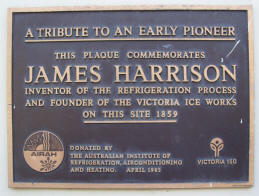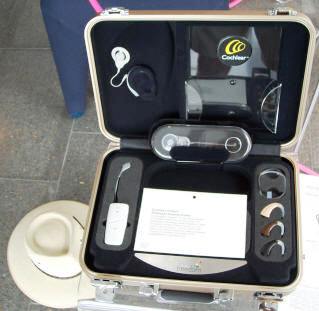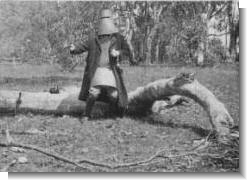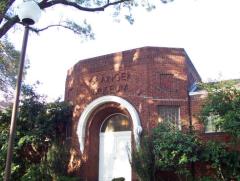Despite its short history since European settlement and relatively small
population, Australia has generated a remarkable number of important
inventions in the last 200 years. In the areas of invention, the sciences
and medical research (For those that like to do comparisons then you could
compare and contrast Australia's inventive output with say the inventive
output of the state of Florida in the USA or Portugal in Europe both of
which have roughly the same cumulative population over that period.)
Australia has achieved at a level well above what would be expected for a
country of its population. Below is a list of a number of inventions that
White Hat considers significant.
Some notable Australian inventions & innovations
Aboriginal
- Stone tools - Aboriginal people are thought to be the first to use
ground edges on stone cutting tools and the first to use stone tools to
grind seeds.
- Boomerang - a throwing stick used for many purposes whose design
allows it to return to the (skilled) thrower.
- Woomera - a spear throwing holder that acts as an extension of the
arm thus allowing greater power and range for the spear. "Woomera"
was adopted as an appropriate name for the rocket launching range and
associated settlement in outback South Australia.
- Didgeridoo - a musical instrument whose sound is immediately
recognisable. It first appeared 2,000 or more years ago and at the time of
European arrival was used in the north western corner of Australia.
Agricultural
Automotive and transportation
-
The Box Kite (or cellular kite) invented by
William Hargrave in the early 1890s during his investigation into the
lifting properties of curved surfaces. Hargrave's work was to form the
basis of much manned flight that followed. Hargraves himself flew 16
feet on 12 November 1894 by linking a group of such kites together and
adding a seat.
-
The Sarich Engine - an orbital combustion engine
invented by Perth engineer Ralph Sarich in 1972. (For more information
see
orbital engine.)
- Wave Piercing Catamaran - designed by Sydney naval architect
Phillip Hercus. His design went on to form the basis for the ocean going
catamarans produced by Incat in Tasmania. Australia's leadership in the
design of multi-hulled vessels continued with the launch in 2005 of
first commercial aluminium trimaran, the Benchijigua Express,
designed by a team of engineers in Perth led by Dr Tony Armstrong.

- The 'Diff' (differential gears) - David Shearer designed a
differential gear which he incorporated into the steam car he built in
South Australia in 1897.
- The 'Ute' - A vehicle with the cabin of a
sedan car (unlike the larger 'pickup truck' which was to develop in the
USA) and the rear of a small truck was designed by Lewis Brandt at the
Ford Motor Company in Geelong, Victoria.1934 and called a 'Utility
Vehicle'. The 'ute' has long been a favourite vehicle for farmers and
tradesmen and is part of the Australian landscape and in particular
becomes the centre of attention at 'ute musters'.
- Degaussing of ships to help protect them from magnetic mines
was patented (see
patent document) by Frankin Barnes of Scoresby (Victoria) in 1939.
Later, during WWII, Barnes' invention was developed further by Charles
Goodeve of Canada
- Black Box Flight Recorder - this famous device was invented
in 1958 by Dr David Warren at the Aeronautical Research Laboratories in
Melbourne.
- The Inflatable Aircraft Escape Slide & Raft was invented by
Jack Grant while working for Qantas in 1965. It is now standard safety
equipment on most passenger airliners in the world.
- Variable Ratio Rack & Pinion Steering - invented by the
engineer Arthur Bishop in 1970. This was quickly adopted by vehicle
manufacturers throughout the world.
- The Zeta Platform, a global drive architecture for rear wheel
drive vehicles, was developed by a Melbourne engineering team led by
Tony Hyde. It is expected to be used in all GM rear wheel drive vehicles
produced throughout the world.

- Premix cement truck? - (we have reason to believe that the
cement trucks with large rotating mixing cylinders on the back are an
Australian invention, but we are still in the process of confirming
this.)
- The Deakin T2 (T squared) Car - When the Ford
Motor Company issued a challenge to design "A T Model Ford for the 21st
century" to celebrate the centenary of the original, the joint winners
were a team from Deakin University in Geelong and a team from Aachen
University of Cologne in Germany. Read more about the
Deakin T2 (T squared) Car.
 Domestic
and consumer products
Domestic
and consumer products
-
Hills Hoist - the rotary washing line with hoist
quickly became and remains a fixture in Australian back yards. The
original rotary clothes hoist had been designed by Gilbert Toyne in
Geelong in 1912, but Lance Hill of Adelaide further developed the design
from 1945 onwards and marketed it under the name of the Hills Hoist. He
later added and patented the winding mechanism in 1956.
- The Electric Drill - was patented by Melbourne inventor
Arthur James in 1889.
- Kiwi Shoe Polish - invented by Melbourne businessman
William Ramsay together
with his partner Hamilton McKellan in 1904 and launched as 'Kiwi' in
1906, this soon became and still remains the most successful shoe polish
in the world. He chose the word 'Kiwi' because of his New Zealand wife.
- The Two Stroke Lawn Mower - developed in Australia in 1930.
Both the two stroke mower and the Hills Hoist featured in the opening
ceremony of the Olympic Games in Sydney in 2000.
- Latex Gloves - developed in Australia in 1945.
- The notepad was created In 1902 by J.A.Birchall of Launceston
when he had the idea of gluing individual sheets of paper together into
a conveniently usable form
- Telephane - This invention which used telegraph lines to
transmit visual information was an important precursor to television.
It was invented by Henry Sutton in Ballarat in 1885.
- The Record Changer - The centre spindle designed by Tasmanian
Eric Waterworth in 1925 for the 'Salonola' record player was soon
adopted for use in record changers throughout the world.
- In 1932
R. M. Williams designed a pair of
elastic sided boots suitable for use by stockmen. Although not the first
boot of this kind, Williams' classic design and workmanship soon
established its reputation. Variants of this design of elastic sided
work boot are now sold around the world as The Australian Boot.
- Shepherd's Castors - the dome shaped castors invented by
George Shepherd in 1946 soon became the world standard.
- Aerogard Insect Repellent - the essential ingredient to this
famous insect repellent was invented by the entomologist Dr Doug
Waterhouse at the CSIRO in 1963. He revealed the formula to
representatives of the Mortein company who patented it and made
substantial returns from the sale of the product.
- The garage roller door in the form of a rolling overhead
metal door was first produced by B&D in 1956 and soon became an icon of
Australian suburbia. It is now exported to or produced under licence in
a number of countries throughout the world. White Hat is still
attempting to verify whether this style of door can legitimately be
claimed as an Australian invention.
- The technique for salt water chlorination of domestic swimming
pools was invented by the Australian scientist Len David in his back
shed in the 1960s. It is regarded by many as a safer, more sustainable
approach than conventional chlorination and requires much less
maintenance. It was released commercially in Australia in the 1970s
where it spread rapidly then in later decades taken up by other
countries around the world, particularly the USA.
Finance, commerce & business
- Pre-paid Postage - the first system of pre-paid
postage was instituted in New South Wales in 1838
- Xerox Photocopying - the technology behind xerography was
developed at The University of Sydney by Professor O U Vonwiller in
1907.
-
Polymer Bank Notes - the Australian-invented
technology used in producing polymer bank notes is now licensed in many
countries throughout the world. In addition, Australia currently
produces bank notes for export to 18 countries.
-
Blast Glass (also known as Stop Shot). A
ballistic and blast resistant glass system. Unlike conventional bullet
proof glass it incorporates an air cavity to help absorb the shock wave
of explosions. It almost certainly saved many lives in the terrorist
bombing of the Australian Embassy in Djakarta in 2004. Invented by Peter
Stephinson.
Food and drink

Plaque in Melbourne marking the site of the
world's first commercial ice works
- Refrigeration - The first mechanical refrigeration plant was
built by James Harrison
in the 1850s. Despite the plaque in Melbourne (see right) we believe
Harrison's first ice works were at Rocky Point on the Barwon River in
Geelong.
- Vegemite - this peculiarly Australian foodstuff created from
waste brewers yeast was invented by Dr Cyril Callister and launched by
the food entrepreneur, Fred Walker in 1923. See also
Who Invented Vegemite?
- Wine Cask - the flexible bag inside a
box was first developed by Thomas Angove of South Australia in 1965
 and later given the now familiar tap by Penfolds Wines and brought to
market by Sam Wynn of Wynnvale Wines. This design has now become almost
universal.
and later given the now familiar tap by Penfolds Wines and brought to
market by Sam Wynn of Wynnvale Wines. This design has now become almost
universal.
- Zip Instant Boiling Water Heater - In 1975, engineers at Zip
designed and patented the first instant boiling water heater in which
the steam is ingeniously recycled to heat the incoming cold water thus
creating a highly energy efficient system. Since then Zip water heaters
have been exported to large numbers of countries and have become a
standard fixture in many staff rooms and catering organisations
throughout the world.
Social Innovations and 'firsts'
-
The Vertically Integrated Migration Service - in
the mid 19th century Caroline Chisholm
together with her husband set up a private migration support system from
the UK to Australia. This included recruitment and education of
potential migrants in England and Ireland, preparation and education for
their arrival in Australia, overseeing of the humanitarian and health
conditions on the transport ships, a loans system to help families
establish themselves, and employment and placement services when the
migrants arrived in Australia all within a business model that made the
operation sustainable. This remarkable achievement would still put to
shame the services provided by many governments and wealthy NGOs
throughout the world today.
-
The Australian Ballot (Secret
Ballot) - the system of casting one's political (or other) vote in a
manner that is private and confidential on an anonymous ballot paper.
Until the mid 19th century, voting for public office was publicly
displayed which left the voter open to intimidation and/or bribery. A
secret ballot system was invented by Henry Chapman of Melbourne in 1855
and within a short time of each other in 1856, both the colonies of
South Australia and Victoria created a secret ballot system which became
known around the world as the Australian Ballot. These Australian
colonies were followed at considerable distance by New Zealand in 1870,
the UK in 1872, Canada in 1874 and eventually the first presidential
election in USA to use Australian Ballot was in 1892. Today the
right to a secret ballot as a protection against coercion and
intimidation is accepted as a cornerstone for any democratic state or
institution.
(Note: This should not be confused with
representative voting. Where a person has been chosen to
represent others - such as in parliament - it is usually regarded that
the vote should be visible so as to demonstrate that the representative
is truly voting in the manner expected by those who they represent. Also
closely related to secret ballot is compulsory voting so that
individuals cannot be intimidated into not voting - for instance
cultural groups who may wish to deny women the vote by intimidating
women to stay away from the voting booths. Compulsory voting has been
readily accepted by all but a few Australians who want all of the
benefits of a democracy without any of the responsibilities. Australia
has been a pioneer in both the the areas of secret ballot and compulsory
attendance for voting.)
-
Australia has been one of
the pioneers of democratic rights. Although Australia was not the first
country to have votes for women, it was amongst the first (see
this table from the Australian Federal Government web site) and
certainly the first to grant women both the right to vote AND the right
to sit (first at colony level in South Australia in 1894 then at
national level in 1902). Votes for women were granted in South Australia
in 1894, Western Australia in 1899, New South Wales in 1902 and Victoria
in 1908.
-
The sustained establishment of the
Eight Hour Day (or 48 hour
working week) was finally achieved in Melbourne in 1856 by a group of
skilled tradesmen and small business operators led by
James Galloway and
James Stephens. This
movement was a precursor to the union movement and the condition were
later to expand to include both skilled or unskilled employees. Although
the 8 hour days had been temporarily achieved in both New Zealand and
America at earlier times, they were not sustained, so the Australian
movement was seen as a particularly significant since this is where it
'took root'. The 6 day working week was later reduced to 5½ and by
the 1950s had mainly changed to a 5 day week and the standard working
week for most employees had reduced to 40 hours.
-
The National Integrity System, often called
The Queensland Model, is acknowledged by just about every country
around the world as well as by the United Nations and the World Bank as
the benchmark approach for reducing corruption in public affairs. In the
1980s the Fitzgerald Inquiry in Queensland came up with a large number
of recommendations for controlling corruption. New Zealand lawyer Jeremy
Pope, founder of Transparency International, organised these
recommendations into a 'system' which he called The National Integrity
System.
Medical

Cochlear Implant (Bionic Ear)
- Electronic Pacemaker - the heart pacemaker was developed at
Sydney's Crown Street Women's Hospital in 1926
- In the 1930s Sister Elizabeth Kenny,
a bush nurse working in country New South Wales and Queensland,
developed a radically new and controversial method of treating children
with polio. Her work went on to be internationally acclaimed and is
regarded as providing important foundations to the discipline now known
as physiotherapy.
- The life saving application of penicillin was developed by
Howard Florey and his team (see more
information at Who Was the Inventor?).
Penicillin has saved millions of lives world wide.
- In 1948 Dr John Cade, a Melbourne psychiatrist, discovered the use
of lithium carbonate (usually just referred to as lithium) in the
treatment of bipolar and similar disorders.
- Many firsts associated with in vitro fertilisation, including the
birth of the first frozen embryo baby at the Queen Victoria Medical
Centre in Melbourne 1984.
- The Bionic Ear- the cochlear implant
was invented by a team led by
Professor
Graeme Clark at The University of Melbourne and in 1978 the first
person received the implant at the Royal Victorian Eye and Ear Hospital.
(see more information at Who Was the Inventor?).
The Bionic Ear has brought hearing to more than 50,000 people in over 80
countries.
- Aspro - Aspro was invented by the chemist
George Nicholas as a form of Asprin in a tablet. The product was
developed in Melbourne between 1915 and 1917, and George's brother
Alfred Nicholas together
with Henry Woolf Shmith were key to its manufacturing and marketing
success By 1940 it had become the world's most widely used headache
treatment. (see more information at Who Was
the Inventor?)
- Begg Orthodontics - During the 1940s and 1950s Percy Begg of
Adelaide developed a system of using relatively cheap and lightweight
stainless steel braces on teeth to replace the expensive and painful
systems which had been earlier used for 'training' and straightening
teeth. Begg's technique soon spread throughout the world.
- The Humidicrib, a portable and inexpensive alternative to the
'iron lung' made from plywood, was invented and manufactured by the
brothers Edward and Don Both in Tasmania in the late 1930s as a response
to the poliomyelitis epidemic of the time. The invention soon spread
across the world and has helped to save the lives of millions of
premature babies.
- Australian surgeon Professor Earl Owen not only designed (in
association with optical company Zeiss) the initial suite of instruments
used for microsurgery, he has also pioneered numbers of the
microsurgical techniques. He is regarded as probably the most important
pioneer of microsurgery.
- Relenza - The world's first anti-flu drug was developed at
several institutions in Victoria and released onto the market in 1996.
- Spray-on-skin for burns victims
developed by Dr Fiona Wood and used to great effect after the 2002 Bali
terrorist bombings.
- Discovery of the Helicobacter pylori bacterium which
causes stomach ulcers and gastritis leading to its successful
treatment. Barry Marshall
and Robin Warren made this discovery in 1982 and received the Nobel
Prize in 2005 for their work.
- The world's first vaccine to prevent cervical
cancer with the potential to save hundreds of thousands of lives
was developed by Professor Ian Frazer and others at the University of
Queensland during the 1990s and eventually approved for use in USA in
2006. The vaccine does not act against cancer but against the virus that
causes cervical cancer. It was released onto the market in 2006 under
the name Gardacil.
General health and wellbeing
- The Alexander Technique is a set of mental and physical
practices developed by
F.M. Alexander of Tasmania in the late nineteenth century. It is
highly regarded by performing artists for reducing stress and by those
suffering back problems. It is now taught in many countries throughout
the world.
Industry

Self constructing tower crane
- Calyx Drill - developed by by Francis Davis around 1893, this
drill was used for drilling large holes in rock and was adopted in many
countries around the world because it reduced waste and was highly
economical.
- Flotation Process - the froth flotation process used in the
separation of minerals from rocks was developed during 1901-1903 by
Charles Potter and Guillaume Delprat of New South Wales.
- Thrust Bearing - the tilt-pad thrust bearing was invented by
Anthony Mitchell in 1905. It is regarded as probably the single most
important invention in the world of thrust technology.
- The self constructing tower crane (also known as the
kangaroo crane or jumping crane) was invented by Eric Favelle
in the early 1960s. The design allows the crane to increase its own
height as the construction proceeds upwards. It is this Australian
designed crane that has been used for the construction of many of the
world's tallest buildings in recent decades such as the World Trade
Centre in New York, Petronas Towers in Kula Lumpur and most
of the tallest buildings in Dubai including the Burj Khalifa.
- HIsmelt, a process of smelting low grade iron ore in a way
that significantly lowers cost and environmental impact, was a theory
put forward by a German scientist in the 1980s. The idea was converted
into reality by a group of engineers who created the first HIsmelt plant
at Kwinana near Perth. The process is expected to soon be licensed
worldwide.

- The CETO wave energy system was first conceived by Alan Burns
in 1975 and this Australian designed and built system was (and currently
remains) the first wave power converter to sit on the seabed and
requires only a small diameter pipe to carry high pressure seawater
ashore to either a turbine to produce electricity, or to a reverse
osmosis filter to produce fresh water with zero emissions.
- The method of creating "smart plastics" was invented by
Professor David Solomon and Professor Ezio Rizzardo of Melbourne and by
2011 had led to over 500 patents. This technique of creating polymers
has led to many applications including printable plastic solar cells,
motor oil additives, superior contact lenses as well numbers of medical
and therapeutic applications.
Computing
- Samba software was initially developed by Andrew Tridgell at
the Australian National University in 1992 . It enables interoperability
between Unix-type systems and PCs and can be found as an important part
of most Unix and Linux systems all over the world.
- Moldflow software - Between 1970 and 1978 Colin Austin
developed software that allowed computer simulation of the injection
moulding process. This allowed designers of moulds to eliminate much of
the lengthy and costly process of test mould designs by trial and error.
Today Moldflow software is used by many leading manufacturing companies
throughout the world particularly in the area of aircraft and automotive
manufacture.
- DQDB (Distributed-queue dual-bus networks) were invented by
Robert Newman at the University of Western Australia in the 19980s. The
algorithm combines the combination and distribution of a range of data
types across networks and as such formal major part of the
communications infrastructure of many cities throughout the world.
- Uniloc Software Protection was invented and patented by Ric
Richardson of Sydney in the 1990s and allows a user to work with a trial
version of software and, after purchase, 'unlock' a full version using a
registration key. This invention was funded by previous inventions by
Richardson including the 'Shade Saver'. The software was copied by
Microsoft who later (April 2009) lost an approximate half billion dollar
damages award for stealing the technology. At the time the damages
awarded were "the fifth-largest patent jury award in US history"
 .
.
- Internet WiFi or Wireless LAN IEEE 802.11 as used in
an in virtually all wireless enabled laptops, smartphones and tablets
(estimated at 800 million devices worldwide and central to devices such
as the Apple iPod and iPad) was developed by an Australian team at the
CSIRO headed by Dr John O'Sullivan.
Although wireless networks had been around since the 1970s, they were
too slow for connecting to the internet. Using a technique known as
multipathing which O'Sullivan had developed for radio astronomy, the
Australian team developed the most commonly used version of WiFi today.
It was patented in 1996 and adopted as the industry standard in
1999. In 2009, after many companies had been using and profiting from
the technology without obtaining the appropriate licences, CSIRO won a
court case protecting its patent rights on the technology, and recouping
the considerable unpaid licence fees from manufacturers of laptops and
wireless-enabled smartphones will help finance further innovation
projects in Australia.
- Google Maps was invented by Danish-Australian brothers Lars
and Jens Rasmussen and developed by an Australian team in Sydney. [They
also then invented an interface to which they initially gave the very
Australian name of Walkabout. It was launched in 2009 under the
name Google Wave but has since been withdrawn by Google in August
2010 because "it did not lure the sea of users the company had
envisioned". However, White Hat would not be surprised if many of the
embedded ideas of Walkabout appear in future computer products.]
(see also the Fairlight Computer Music Instrument below)

The History of the Kelly Gang
Arts and entertainment
- The multi-media entertainment Soldiers
of the Cross produced by the Limelight Studio of the Salvation Army
Melbourne is regarded as the forerunner of the feature film, and
The Story of the Kelly Gang, made in 1906 is regarded as the
first feature length film ever made. It ran for more than an hour.
Australia can be regarded as the birthplace of the feature film
since it continued to produce feature films for another five years
before any other country created their own.
- The painter Pro Hart has
also been a prolific inventor,
- The Free Music Machine - an electronic music machine invented
by Percy Grainger that was the
forerunner of modern synthesizers.
- The Fairlight CMI (computer music
instrument) revolutionised electronic music by the way it manipulated
sampled sounds. It remains the basis of most electronically produced
music today. It was designed by Peter Vogel & Kim Ryrie in 1979.
- The Cineon Digital Film Workstation - a system that takes an
image from film, digitally manipulates it and returns it to film - was
developed by a group of engineers led by David Mann (whose name appear
on the patent) in the Kodak laboratories in Victoria around 1990. (see
more information at Who Was the Inventor?).
All computer based video editing software in both professional studios
and home computers now use the underlying principles developed for
Cineon.
Sport
- Australian Rules Football - Invented in
the 1850s (with roots in other games including local Aboriginal ones).
In White Hat's opinion the greatest team game in the world. In
1858-9 Tom Wills and others codified the rules and these handwritten
rules are reproduced in large format in one of the entry foyers of the
MCG. By the time other
football styles such as soccer and rugby were codified in their modern
form, Australian Rules Football was well established and attracting
large crowds to the weekly competition.
- Callisthenics is a uniquely
Australian form of physical culture. It appears to have originated on
the Victorian goldfields and evolved over time to the extent that it was
included in eisteddfods and school curricula and attracted large numbers
of participants. It involves elements of gymnastics, dance, performance
art and theatre and often involves the use of rods, clubs, hoops and
other equipment.
- The 'Australian Crawl' - the style of 'overarm' or
'freestyle' swimming stroke now familiar in competition swimming. It
evolved out of the 'trudgen' stroke adopted by certain swimmers in
Sydney in the early 1900s. The new stroke was soon known worldwide as
'the Australian Crawl' and its most famous exponent (and quite possibly
the inventor of its characteristic version) was
Fanny Durack. The year 1912
saw one of the greatest ever sporting achievements by an Australian.
Fanny, using an Australian Crawl was not only the first woman ever to
win an Olympic gold medal in swimming, in the process she cut four
seconds of the men's world record.
- The 'Tote' (automatic totalisator) - was invented in 1913 by
George Julius. The automatic totalisator records incoming horse racing
bets and automatically calculates and adjusts dividends.
- Polocrosse was invented in Australia in 1938 and has since
become an international equestrian sport.
- Race Cam - was created in Australia by the engineer Geoff
Healey.
- The winged keel created by Ben Lexcen was famously used in
the Americas Cup.
- Access Class Dinghies - designed and
built in Melbourne and now sailed in 15 countries, the Access Class
Dinghies were designed to be easy for anybody to sail.
- Speedo swimwear - the continuing innovation in design make
this Australian product highly valued for competition swimming and is
often seen as giving Australian swimmers an 'unfair' advantage.
We are currently investigating the type of cycling race known as the
Australian Pursuit. We do not yet know if it was invented in Australia
but its name suggests that it was.
Communication
- The Teleprinter - This famous machine for recording telegraph
messages onto a paper tape was invented by Donald Murray of Sydney
- The Pedal Wireless - The two way radio powered by a
pedal-operated generator was invented by Alfred Traeger in 1927 and
quickly became the central tool of Royal Flying Doctor Service and
distance education in the Australian outback.
Scientific
- Pioneering work in the use of X-ray crystallography by
William and Lawrence Bragg in
examining crystal structures leading to their winning the Nobel Prize in
1916 for their discoveries
- The Atomic Absorption Spectrophotometer - this important
scientific analytical instrument was invented by
Sir Alan Walsh of the CSIRO in 1952.
- The Mills Cross - a radiotelescope design consisting of two
long ground antennas either in the form of a cross or a T shape was
adopted world wide. It was invented by B. Y. Mills at the CSIRO in 1953
- Synroc - a synthetic rock designed to
'safely' store high level nuclear waste was invented by Ted Ringwood
in
1975. As this process is regarded as working best after the nuclear
waste has had a 'cooling down' period of 25-30 years, this invention is
likely to more highly recognised in coming decades.
- Gene Shears - this discovery, central to much biotechnology
was made by Wayne Gerlach and Jim Haseloff at the CSIRO in 1986.
- The Sensitive High Resolution Ion Microprobe (SHRIMP) which
measures the age of small samples of rock to very high accuracy was
invented by scientists at the Australian National University in
Canberra. The first international sale of a unit was in September 2009
when the University of Granada purchased one for six million Australian
dollars.
- SILEX (separation of isotopes by laser excitation) was
invented by Dr Michael Goldsworthy and Dr Horst Struve at Lucas Heights
in Sydney. Twenty other countries were working on the technique but had
been unsuccessful It allows for the enrichment of nuclear fuel using
small, low-cost, energy efficient techniques thus opening up the
possibility of cheaper nuclear power, especially for smaller countries.
However authorities in the USA were also concerned that it would also
make it easier for smaller countries and terrorists to develop nuclear
weapons undetected by international regulators and as a result the USA
licensed the technology and development in 1999 and 'classified' it in
2001.
Appropriate Technology
Often solutions to problems exist but are too expensive or inappropriate
for use in remote communities. Australian inventors have come up with simple
solutions which are often appropriate in the Australian outback or third
world countries.
- The Coolgardie Safe was invented by A. P. Mc Cormick on the
West Australian goldfields in the late 1890s. It is a simple open-mesh
food cabinet covered with hessian. The hessian is kept damp by a water
tray at the top and the safe is also sometimes placed on a tray of water
to stop access by ants. The latent heat of evaporation keeps the
contents cooler than ambient temperature outside the cabinet. This
simple cooling cabinet could be (and often still is) improvised out of
materials to hand.
- The Icy Ball Kerosene Refrigerator was invented by
Edward Hallstrom in Sydney in 1923
and manufactured and distributed by him. For most in the outback at the
time it was the only practical form of refrigeration and certainly an
advance on the Coolgardie Safe.
- The Stobie Pole is a form of electricity power line pole
suitable for deserts or other regions where trees for the more commonly
used wooden pole were not readily available. It was created by the
engineer James Stobie and patented in 1924. It consists of cement
sandwiched between two pieces of steel which are often railway line
offcuts. Stobie Poles have excellent survival properties against a range
of natural elements and have become a well-known part of the landscape
in South Australia.
- Buffalo Fly Trap - In 1991 the CSIRO designed a low-tech walk
through tent for cows where brushes removed the damaging and irritating
buffalo flies from the animal. The flies become trapped in an upper
chamber of the tent where they eventually die. Over time the cows
realise the comfort benefits and self-clean by visiting the tent
unbidden.
Design Improvements
Sometimes people come up with design improvements which, although not
being 'inventions' in the true sense of the word, can be important in their
own right. Here are a few Australian ones.
- The Dual Flush Toilet. Although Australians in water-scarce
circumstances have long used a variety of devices to restrict the amount
of water used in a flush toilet (including placing a brick in the
cistern) the dual flush cistern with two buttons (one for full-flush and
one for half-flush) was a design improvement that helped save water.
Under Development
- Development of The Bionic Eye is well under way using
expertise gained from The Bionic Ear (see above).
- The Flying Electronic Generator was invented by Australian
engineer Professor Bryan Roberts. It is a form of tethered flying wind
farm which harvests energy from high altitude winds. It is currently
being developed and trialled in America.
more
information >>
- A team from the Walter and Eliza Hall Institute in Melbourne led by
Professor Alan Cowman has developed the first genetically-modified
strain of malaria which is capable of being used as a live vaccine
against malaria. Trials on humans are expected to begin in 2010.
- Chinese-born Dan Li came to Australia with the aim of developing a
low cost method of creating graphene (a graphite-derived
nonmaterial discovered by British researchers in 2004 with great
potential for useful applications) and with assistance from teams at
Monash and Wollongong Universities and a patent was filed on the
technique was filed in 2008. The research continues.
|
|
Copyright © 1995 - 2025
White Hat.
|
Some attractions and events related to Australian Inventions:
Grainger Museum

Built by arguably Australia's finest musician,
Percy Grainger, to house his
collection of music-related instruments, scores and other items associated with
his life and career. more
info > >
___________________
 ___________________
___________________